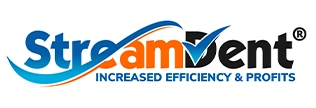StreamDent Case Study
Willow Dental in Fresno, California, owned by Dr. Shawn Anderson

Founded by Dr. Shawn Anderson, Willow Dental is a thriving dental practice with fifteen operatories, four GP’s and several specialists on staff.
As his practice grew, Dr. Anderson saw the need to streamline office procedures. His efforts at writing of a standard operating practice manual were time-consuming and cumbersome to use.
He began to search for a better system.
Common Problems in a Busy Dental Practice
- Unique styles
Since dentistry is an art, individual doctors have developed their own unique methods. They may use different procedures and have different requirements for their assistants. This can result in errors during procedures. - Training
Training of new employees is challenging. It may be done by different people and may not be consistent. The result is newer employees who experience a high degree of stress and haphazard training can cause delays and errors in treatment. - Customer Service
The patient often evaluates the quality of treatment on such things as timely care and confident, friendly assistants. They want to be treated with respect by highly professional workers. When procedures are delayed or when errors become apparent during a procedure, they become anxious.
Dr. Anderson needed a better way to streamline office procedures. He needed to find a way to meet the above challenges in his desire to provide his patients with the best possible customer service.
The StreamDent Solution
In 2013 Dr. Anderson discovered a program that dramatically changed the way Willow Dental operates. StreamDent is an online service that organizes every procedure, set-up and virtually every patient interaction from start to finish. It is a web-based paperless system based on scripts using best practices from across the dental industry. It ensures a consistent standard of care throughout the office.
Implementation
StreamDent®’s system teaches dentists and staff to evaluate their daily routines with an eye to upgrading efficiency. They look closely at:
- Instrument management
- New patient processes
- Room set-up and turnaround
- Delegation of duties
- Improvement of patient flow
- Increase of productivity and management costs
- New Techniques
Results
- Confident Doctors and Staff
- There was immediate buy-in by all staff members.
- The program was easy to use
- System sheets were easily adapted to each GP
- Stress levels were reduced
- Procedures went smoothly
- Professional Systematic Training
- New employees learned the system quickly and easily.
- Scripts supported new employees as they learned.
- Training was consistent.
- New employees felt comfortable and confident.
